
|
Olympus E-620 Image Samples — Part 1 |

|
My other articles related to the |
|
During the first few weeks with the E-620 I didn't have much time for shooting controlled-conditions or comparative samples; this is why this group contains rather casual shots. Still, they should give you some idea about the camera's imaging capabilities. Over the next month I hope to provide more samples, including those allowing for some more systematic comparisons. I will also investigate the camera's performance above ISO 400, which I haven't done yet. (After all, most of the time I stay within this limit, and so will probably you.) The samples are shown as usual: reduced full frame at left, and a full pixel scale fragment, otherwise unmodified, at right (sometimes more are provided). There are also links to untouched, original in-camera JPEG files (at a compression of 1:2.7, i.e., SHQ). When scrutinizing the samples in a full pixel scale you have remember that the images are magnified; these are not usual viewing conditions. On a typical (96 DPI) monitor, 1:1 samples from a 12 MP camera correspond to prints sized at 31.5×42" (80×107 cm). Such prints are assumed to be viewed from a distance equal to the print diagonal, which is 52.5" (133 cm), so you may want to move back from your monitor to evaluate subjectively the resolution, noise, and any possible artifacts. The samples so far:
See here for references to more E-620 image samples. Annapolis Harbor and Bowie Town Center malls in Maryland are convenient locations to take some quick shots of brightly colored objects, especially in good weather. These were among the first pictures I took with the E-620. All pictures in this section used Sunny WB, Natural Picture Mode with no adjustments, noise filter at Standard. |
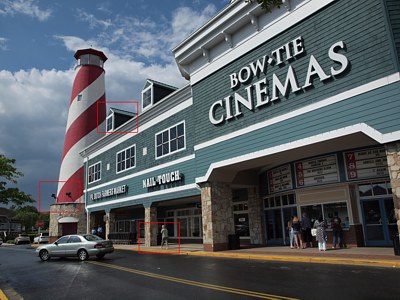
|
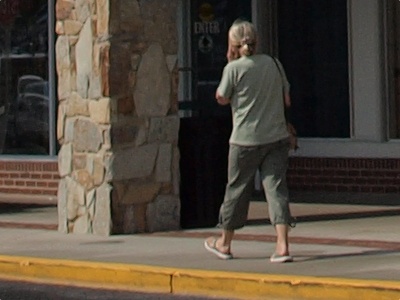
| |
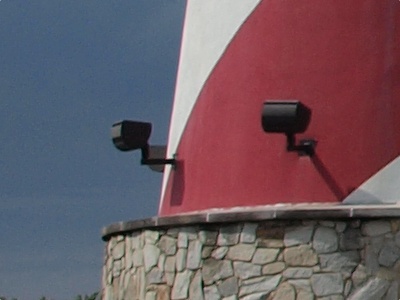
|
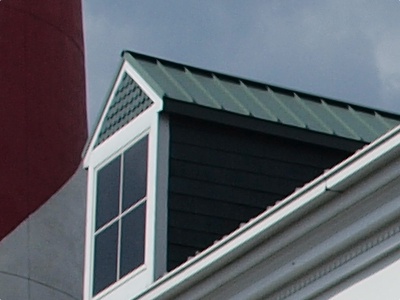
| |
|
[1] 14-42 mm F/3.5-5.6 ZD at 14 mm; aperture priority (-0.3 EV): 1/1250 s at F/5.6, ISO 100; [full frame] | ||
|
Well, the first sample is very much as I expected (and almost identical to such a shot I've got from the E-30). Colors vibrant yet natural, details in highlights and shadows, the tiny lens delivers surprisingly good sharpness. There is a small amount of chromatic aberration left at F/5.6 (second fragment, left of the white area), and sharpening artifacts are well under control (third fragment, right of the dark-red stripe). Very nice. | ||
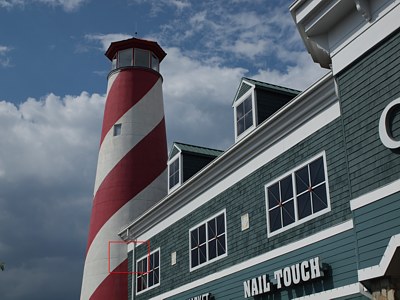
|
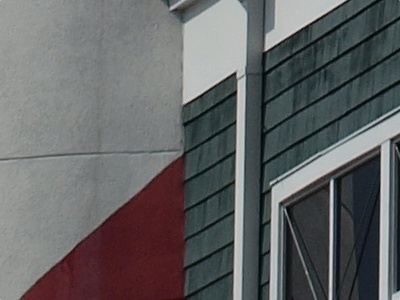
| |
|
[2] 14-42 mm F/3.5-5.6 ZD at 27 mm; aperture priority (-0.3 EV): 1/2000 s at F/5.6. ISO 100 | ||
|
The second sample is very similar. I'm including it just to show how exposure automation reacted to a scene shifted towards brighter areas: there was a 0.7 EV change! | ||

|
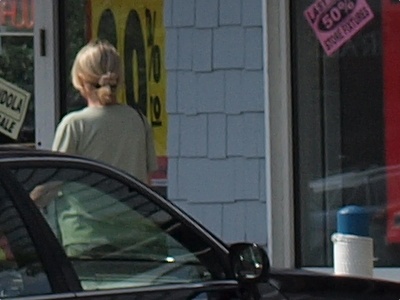
| |
|
[3] 14-42 mm F/3.5-5.6 ZD at 27 mm; aperture priority (-0.3 EV): 1/1000 s at F/5.6, ISO 100 [full frame] | ||

|
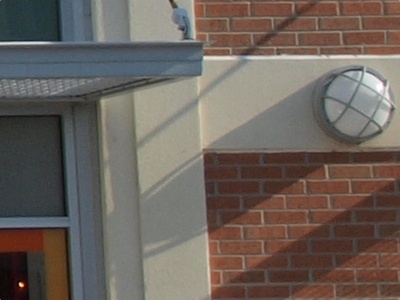
| |
|
[4] 14-42 mm F/3.5-5.6 ZD at 19 mm; aperture priority (-0.3 EV): 1/800 s at F/4.0, ISO 100 [full frame] | ||
|
Two more similar subjects; again, a nice job. Very good detail, low noise in the sky area without Saran wrap smoothing. Under these conditions the camera performs very well, indeed. | ||
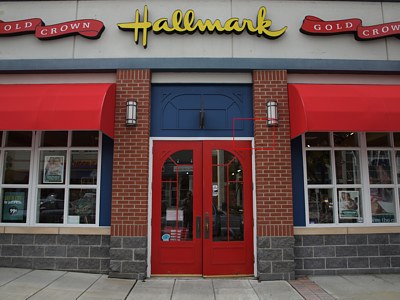
|
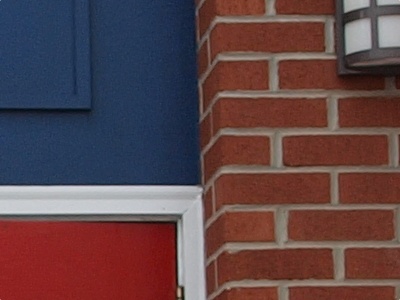
| |
|
[5] 14-42 mm F/3.5-5.6 ZD at 19 mm; aperture priority (-0.3 EV): 1/400 s at F/4.0, ISO 100 [full frame] | ||
|
Open shade under clear sky. The sunny WB gives, obviously, colder tones, but the results are quite pleasing. Color performance very good. With the E-510 I would have to use -0.7 EV compensation here. | ||

|
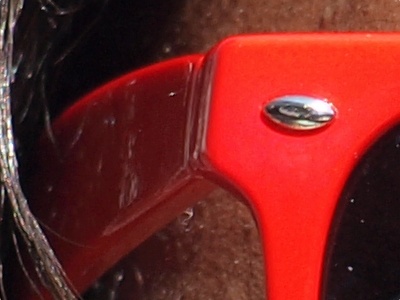
| |
|
[6] 40-150 mm F/4.0-5.6 ZD at 102 mm; aperture priority (O EV): 1/320 s at F/5.1, ISO 100 | ||
|
Nice skin tones, good colors. The highlights on the forehead could not have been avoided, take it or leave it. This is where I find things to photograph if I don't feel like leaving home. Both these samples were shot with image stabilization, and at somewhat higher ISO values to reduce camera shake. | ||
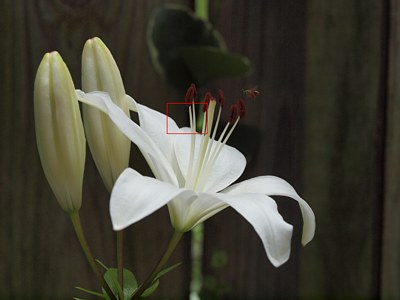
|
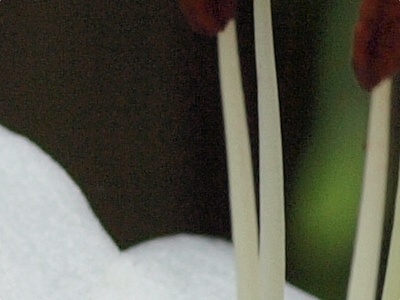
| |
|
[7] 50 mm Macro ZD; aperture priority (-0.3 EV): 1/320 s at F/7.1, ISO 200; Sunny WB, Natural (no adjustments), NF at Low [full frame] | ||
|
The white lily is a tough subject, with the highlight detail quite fragile; I think the camera handled it quite well. We can see some noise creeping in within the shadow areas; not a deal-breaker but more than I expected, and this is not just a matter of amplitude (I can live with that), but artifacts: some banding and patching can also be seen: have a closer look at the full frame, directly above the leftmost flower. Again, nothing outrageous, but still, and at ISO 200! Comparing this to my samples Note that noise filtering was at Low here, while sharpening at N±0. I wasn't using Live View, so that sensor temperature is not an issue. This may need more investigation. | ||
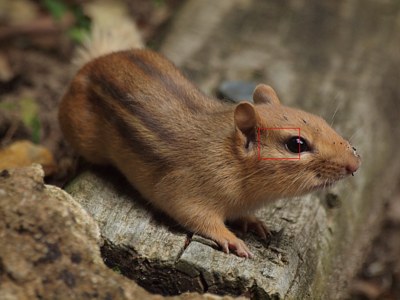
|
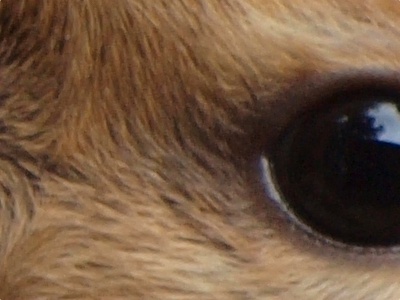
| |
|
[8] 70-300 mm F/4.0-5.6 ZD at 300 mm; aperture priority (-0.3 EV): 1/160 s at F/7.1, ISO 400. Sunny WB, Natural with no adjustments, NF at Standard [full frame] | ||
|
The chipmunk picture, shot under slightly overcast sky, shows good tonality. I focused on the eye, but the coat around it is still a bit fuzzy — maybe excessive noise filtering? The noise itself is not objectionable (this is not just because of a busier background), even if some clustering can be seen; less than in the previous sample; no banding. | ||
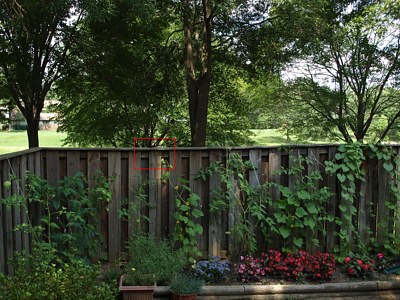
|
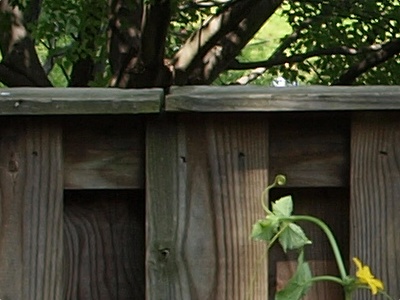
| |
|
[9] 14-42 mm F/3.5-5.6 ZD at 17 mm; aperture priority (-0.3 EV): 1/100 s at F/5.6, ISO 100. Sunny WB, Natural (no adjustments), NF at Low [full frame] | ||
|
At Natural, contrast is not excessive, and (with the help of negative compensation) the camera did a good job handling the dark foreground with bright patches in the background. Detail in shadows is rendered very nicely, the shadow noise is almost non-existent. Obviously, some chromatic aberration in steep transitions in corners (top left), but just some. A neighbor's daughter (ISO 100, 400) This young lady was in a co-operative mood: she just put away whatever she was eating (leaving just some on her face) and got to work as my model. All pictures were shot from hand, no fill flash. The frames were chosen to show camera's response under varying conditions: open shade, sunlight, and backlighting. | ||
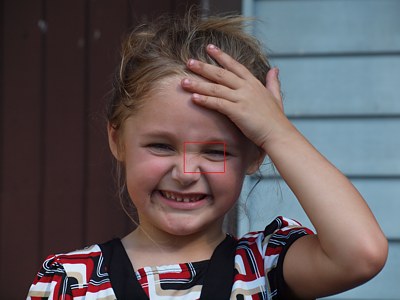
|
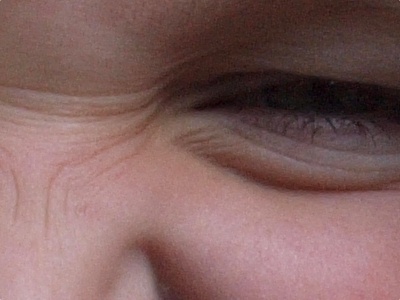
| |
|
[10] 40-150 mm F/4.0-5.6 ZD at 79 mm; aperture priority (0 EV): 1/640 s at F/5.6, ISO 400; sunny WB, Natural (no adjustments); NF at Low [full frame] | ||

|
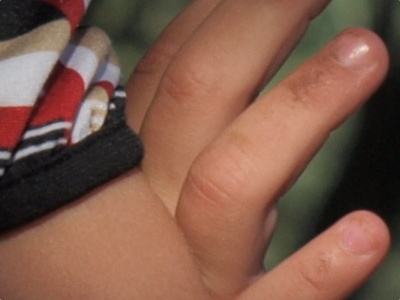
| |
|
[11] 40-150 mm F/4.0-5.6 ZD at 67 mm; aperture priority (-0.7 EV): 1/160 s at F/8.0, ISO 100. Sunny WB, Portrait mode with sharpness and contrast at -2; NF at Low [full frame] | ||
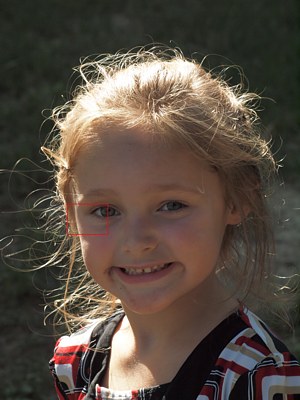
|
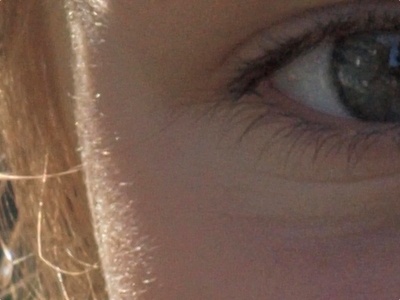
| |
|
[13] 40-150 mm F/4.0-5.6 ZD at 76 mm; aperture priority (-0.3 EV): 1/200 s at F/8.0, ISO 400. Sunny WB, Portrait mode with sharpness and contrast at -2; NF at Low [full frame] | ||
|
Mind it, I'm not much of a people's photographer, so judge the camera, not me. I think the E-620 did a good job in all cases. Open shade is natural, the sunny picture quite yummy, and even the backlighted snapshot came out nicely. In the last one I could have tried shadow compensation, but haven't thought about it; exposing this one a bit lower would help with the burned-out areas, but the face itself could get muddy then; I decided to keep things this way. | ||
|
This is a subject I've been using for these purposes since 2000; dependable and predictable. These shots were all taken at ISO 200, Sunny WB, Natural Picture Mode (no adjustments), noise filtering Low; tripod. Two kit lenses were used here, each at both extremes and a medium focal length. With the short zoom the aperture was F/5.6, with the long one — F/8.0. For this subject I usually apply an exposure compensation of -1/3 EV or even -2/3 (if the sunlit areas are small); to check how this works in the new camera, I was bracketing every shot. In all cases -1/3 EV was what I liked most, so this is what I'm presenting here. Histogram analysis confirms that I am right about it, so this is not just a matter of taste. Interestingly, in the first such series, done a few days earlier, I had a number of frames with camera shake blur. With quite high shutter speeds, on a tripod? As I checked, the image stabilization was left on by accident — this may be the only explanation I have (even if I don't quite understand how this matters); it never happened before. In the new series of about 40 frames not a single one shows this effect. This may have something to do with the mirror action; in this session, just in case, I not only turned the IS off, but also used mirror lock. | ||
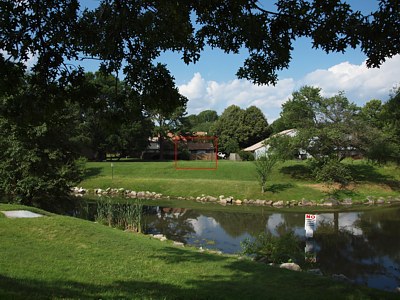
|
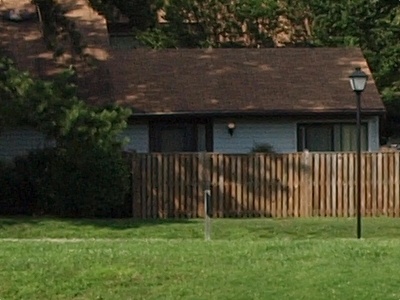
| |
|
[14] 14-42 mm F/3.5-5.6 ZD at 14 mm; aperture priority (-0.3 EV): 1/1000 s at F/5.6, ISO 200 [full frame] | ||
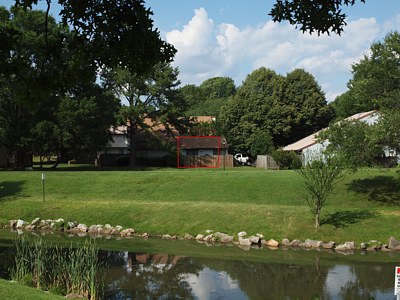
|
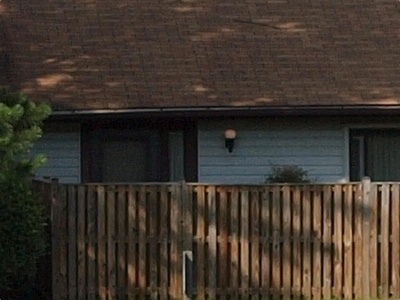
| |
|
[15] 14-42 mm F/3.5-5.6 ZD at 25 mm; aperture priority (-0.3 EV): 1/1000 s at F/5.6, ISO 200. [full frame] | ||
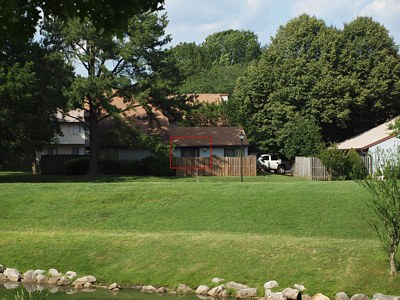
|
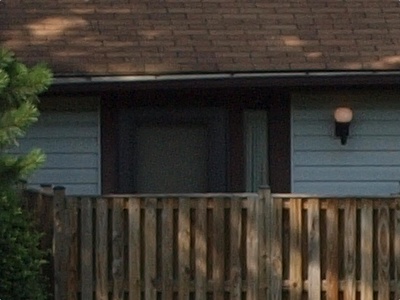
| |
|
[16] 14-42 mm F/3.5-5.6 ZD at 42 mm; aperture priority (-0.3 EV): 1/800 s at F/5.6, ISO 200. [full frame] | ||
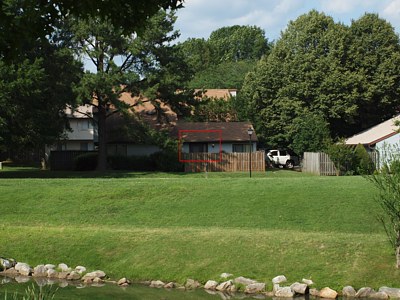
|
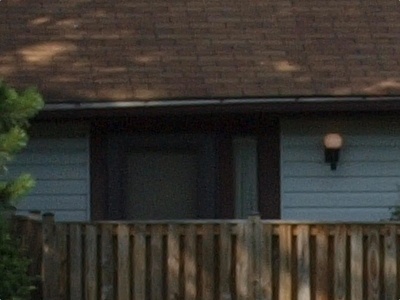
| |
|
[17] 40-150 mm F/4.0-5.6 ZD at 40 mm; aperture priority (-0.3 EV): 1/400 s at F/8.0, ISO 200 [full frame] | ||
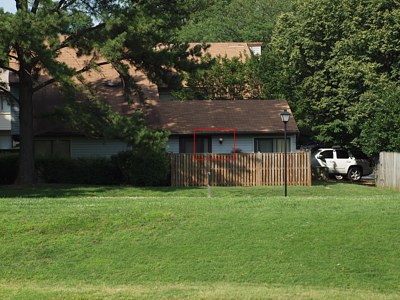
|
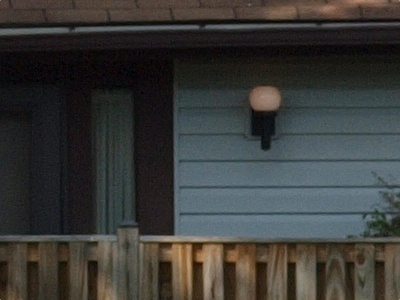
| |
|
[18] 40-150 mm F/4.0-5.6 ZD at 73 mm; aperture priority (-0.3 EV): 1/320 s at F/8.0, ISO 200 [full frame] | ||
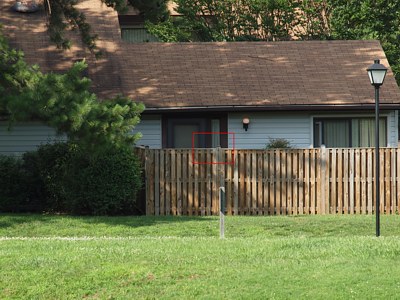
|
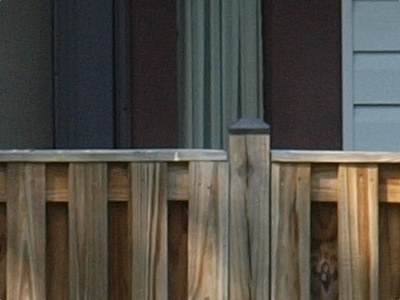
| |
|
[19] 40-150 mm F/4.0-5.6 ZD at 150 mm; aperture priority (-0.3 EV): 1/250 s at F/8.0, ISO 200 [full frame] | ||
|
Not much to say here: a typical Olympus job, which is a good thing. Colors are natural: not exaggerated and yet not bland, and image detail — first class. Note the fence boards in [14], at 14 mm. Full frames show some chromatic aberration in corners at 14 mm, but we already knew that; I am also certain the sharpening algorithms have been tweaked, reducing the magnitude of artifacts they introduce (as compared to the E-510). The ISO 200 noise (my "lily effect") is nicely under control (check the dark door area in sample [19]), and the sky is just the way it should be. The longer zoom seems to be optimized for the 150 mm focal length (note visible sharpness fall-off towards the corners); at 40 mm is shows less resolution than the shorter one at 42 mm; this was confirmed in some other sessions, too. At this time the following such pages are available:
| ||

|
My other articles related to the |
|
Olympus® is a registered trademark of Olympus Corporation.
This page is not sponsored or endorsed by Olympus (or anyone else) and presents solely the views of the author. |
| Home: wrotniak.net | Search this site | Change font size |
| Posted 2009/06/26; last updated 2009/11/30 | Copyright © 2009 by J. Andrzej Wrotniak |